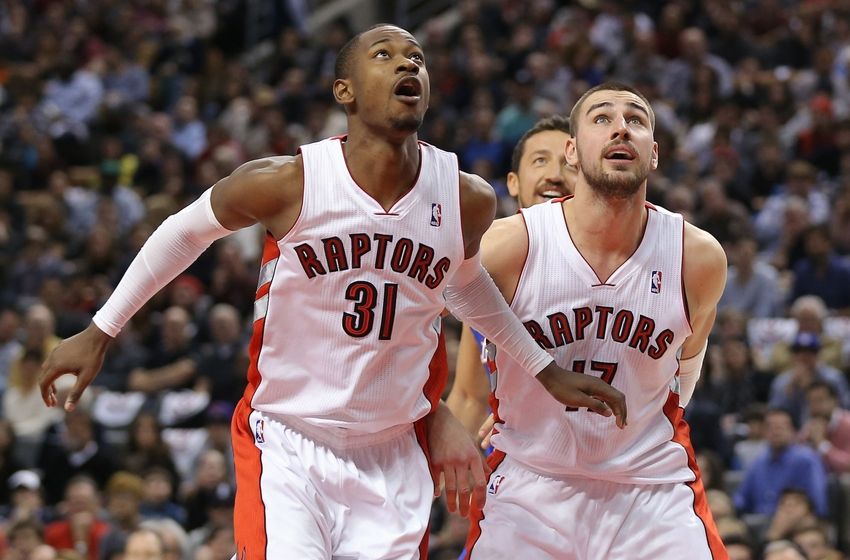One of the defenses of the three-year, $31-million contract extension that the Toronto Raptors signed Terrence Ross to last week was that in the new NBA economy, such a deal should be tradable. Following a terrible four-game stretch of play for Ross, which follows three-plus years of wild inconsistency, some fans are looking for ways to unload him already.
While I’m not much for firing up the trade machine, especially so early in the season (teams generally don’t shuffle players much until after Dec. 15, when players who were signed as free agents can be traded, opening up far more possibilities), two questions we received warrant answering for the salary cap minutiae they shed light on.
We received the following question from reader Trevor:
Hey Blake is it true that T ross (and Jonas) cant be traded until after the trade deadline because he got an extension?
The short answer is “yes, they can be traded.” There are restrictions placed on dealing players who signed recent extensions, but those restrictions don’t apply to players who had their rookie-scale contracts extended. Ross and Jonas Valanciunas can be dealt at any point, but it’s not quite as simple as trading another player.
To wit, we also received this trade proposal from a reader on Twitter:
@raptorsrepublic am…am I insane or could this work? (Plz ignore that JJ didn’t really work out in MEM last time) pic.twitter.com/QxD2LE0c2O
— Dave! (@Contramandave) November 10, 2015
I’m going to ignore analyzing the actual trade (have at it in the comments), and instead focus on a detail pertaining to dealing Ross.
If a player is dealt between the date of signing an extension and the date the extension kicks in (July 1 for Valanciunas and Ross), then a sparsely used rule called the “poison pill provision” comes into play. The poison pill provision prevents teams from signing players to an extension and then using their current rookie-scale salary for the purposes of matching salaries in a trade.
Here’s a longer explanation, from Larry Coon’s indispensable CBA FAQ:
When this happens, the player’s trade value for the receiving team is the average of the salaries in the last year of the rookie scale contract and each year of the extension. The sending team uses the player’s actual salary when calculating their total outgoing salary.
…
Such a player would be very difficult to trade — a legal trade can only be accomplished if both teams add additional salary to the transaction, or if they include a third team that is able to absorb excess salary.
So to clarify for the examples of Ross and Valanciunas: For the purposes of matching salary in a trade, the Raptors would be “sending out” their actual 2015-16 salaries while the receiving team would have incoming salary of the average of the total years the player is under contract. Put in numbers that hopefully make that more clear:
| 2015-16 Salary | Average of 2015-16 and extension year | Raptors’ Outgoing Salary | Recieivng Team’s Incoming Salary | |
|---|---|---|---|---|
| Valanciunas | $4,660,482 | $13,732,096 | $4,660,482 | $13,732,096 |
| Ross | $3,553,917 | $8,638,479 | $3,553,917 | $8,638,479 |
This serves to make trading Ross or Valanciunas quite difficult. The Raptors would either need to find a trading partner with ample cap space, such that salary-matching is less of a concern (Philly or Portland), or trade either player in a more complicated multi-player package (or three-team deal).
So while the answer to the initial question is “yes, Ross can be traded,” the second question highlights just how difficult doing so would be. In the example the reader tweeted – Ross, James Johnson, and Lucas Nogueira for Zach Randolph – you’re asking a team to take on three players, Ross’ future deal, and not giving a ton extra back (even a Ross-Patrick Patterson deal isn’t workable).
For the purposes of Raptors fans playing around on the trade machine ahead of the February deadline, it may be best to consider Ross and Valanciunas largely off the table, unless you want to get really creative.



